Aquarium
Plumbing
Primer
|

|
This article will not teach you how to plumb a tank or provide detailed how-to-do-it instructions. However, this article has pointers that will be useful to almost all aquarists. If nothing else, you will learn the importance of understanding head pressure and why using flexible hose, Teflon tape, ball valves and silicone lube is important. You will learn when to use a metal clamp and when to use a plastic clamp, and when to use a PVC adaptor and when to use a nylon adaptor. Learning about plumbing will ultimately lead to a more efficient aquarium, both in terms of cost and performance, and greatly lessen the chance of leaks.
Plumbing Part Sizing
The first thing to understand is that the nominal size of aquarium plumbing parts refers to the near approximate inside diameter of the plumbing part. In other words, a one inch pipe has an inside diameter of approximately one inch. The outside diameter will vary depending the type of pipe, fitting or hose as the thickness of the outside wall of plumbing parts varies greatly. Here are the measurements for Schedule 40 PVC Pipe.
|
Schedule 40 PVC Pipe Dimensions
|
|
Nominal Pipe Size
|
O.D.
|
Average I.D.
|
Min. Wall
|
|
3/8"
|
.675
|
.473
|
.091
|
|
1/2"
|
.840
|
.602
|
.109
|
|
3/4"
|
1.050
|
.804
|
.113
|
|
1"
|
1.315
|
1.029
|
.133
|
|
1-1/4"
|
1.660
|
1.360
|
1.140
|
|
2"
|
2.375
|
2.047
|
.154
|
|
2"
|
2.375
|
2.047
|
.154
|
Rest assure that 1” fittings will all fit together. That is not the issue. The problem is when aquarists do not know the size of the fitting and measure the fitting incorrectly. Always measure the inside diameter of the fitting, pipe or hose to get matching plumbing parts.
When to Use Hard Plumbing
Hard PVC plumbing has its advantages. It's very durable and professional looking. It also lasts longer than soft plumbing. In general PVC pipe is good for any lines that won’t need to be moved often, such as the sump drain line or any tubing 1.5” diameter or larger.
When to Use Soft Plumbing

Soft plumbing (
flexible hose) is easier and cheaper than hard plumbing and has some distinct advantages.
- Soft plumbing is flexible and better for applications where the line will need to be moved frequently, such as the hoses connected to media reactors
- Soft tubing works well as it suppresses the vibration from the pump it's attached to. Because of this we recommend using soft tubing on the inlet and outlet of any pump with fittings less than 1.5”.
- As soft plumbing is flexible it can be more easily fitted around obstacles. This leads to less head pressure and greater efficiency.
Understanding Head Pressure
Most pumps have a max head (
maximum head pressure) listing. It's important to understand head pressure as without understanding it you will not know how much flow your pump has. In a worst case scenario your pump will not work as the head pressure will be too great.
Head pressure is the extra resistance that plumbing and fittings give to a water pump plus the pressure of gravity. If you were to put a one foot hose on a pump and measure the flow and then put a 10 ft hose on the pump and measure the flow you would notice that the water flow is significantly lower out of the longer hose, especially if the hose is vertical. The horizontal pressure is a result of friction. The vertical pressure is a result of gravity and friction.
Every one foot of vertical distance is one foot of head pressure. Every ten feet of horizontal distance is one foot of head pressure. 90 degree angles are one foot. 45 degree angles are one-half foot. (
NOTE: In a closed loop system you do not need to factor in vertical distance.)
When selecting a water pump don’t just look at the flow of the pump. Also look at the flow chart for that pump. This will let you know what the actual flow rate will be after the amount of head pressure is factored in. Some pumps are called pressure pumps and some circulation pumps. As the name suggests, pressure pumps handle high pressure situations much better than circulation pumps.
Unions

Unions are amazing plumbing fittings that allow you to quickly disassemble and reassemble pipe. Here are some good places to use unions:
- Before any bend in a drain line
- Before and after any equipment such as reactors, filters, pumps and UV sterilizers you need to remove for servicing
- On the outlet of sumps
- Before bends in hard plumbed return lines
Bulkheads

Bulkheads allow you to run a pipe through a flat surface. Bulkheads are most commonly used to run plumbing through holes drilled in an aquarium or sump. Bulkheads are described by the size of the pipe that will fit into them. In order to create a seal the bulkhead hole needs to be larger than the pipe that fits into the bulkhead. For example, a
1” Schedule 80 Bulkhead will fit into a 1-7/8” hole. Make sure you select the correct bulkhead size for the hole that you have.
We encourage aquarists to buy bulkheads with threaded bottoms so the fitting can be replaced without cutting PVC pipe. We carry
Inland Seas Schedule 80 Bulkheads,
Lifegard Aquatics Schedule 40 Bulkheads and
JT Manufacturing Schedule 40 Bulkheads.
Schedule 40 or Schedule 80
PVC fittings come in two thicknesses: schedule 40 and schedule 80. Schedule 80 fittings are thicker and more durable. We recommend schedule 80 fittings in critical places such as for bulkhead fittings at the bottom of a tank or before and after large pumps. In an ideal world everything could be plumbed in schedule 80, but the extra expense and overbuilt nature of these fittings make them unnecessary in most places.
Ball Valves

Ball valves allow you to turn the water flow on and off for a particular plumbing line. Ball valves can also be used to adjust the flow through certain equipment such as media reactors and UV sterilizers.
Not all ball valves are created equal. Some will deteriorate over time and become hard to turn. Higher quality balls valves, such as the Dura Ball Valves we sell, will stay easy to adjust even after years of use. The ball valves we carry were selected with aquarium use in mind and will not freeze up over time. Additionally, they are meant for indoor use. Avoid the outdoor use ball valves from hardware stores as they are not as well sealed because a small outdoor leak is not as serious as a small indoor leak.
True Union Ball Valves combine unions and a ball valves into unique fittings that let you both turn off water flow and disassemble pipe. True unions are excellent in the following places
- Before and after external pumps
- Before and after external UVs
- Before media reactors
- Before bends in closed loops
When to use Straight Nylon Adapters or PVC Insert Adapters
Most people use a combination of hard plumbing and soft plumbing for their tank. To convert between hard and soft plumbing use an insert adaptor. Insert adaptors come in schedule 80 PVC or nylon. Both of these adaptors have advantages and disadvantages.
The PVC adaptors are very hard, but when they are screwed into standard schedule 40 PVC fittings the insert adaptor can often over expand the fitting and cause it to crack. Because of this we only recommend using schedule 80 insert adaptors with schedule 80 fittings or next to UV sterilizers where the UV light can degrade nylon.
Nylon inserts are better than PVC in most cases because they will compress if over inserted rather than cause a crack.
Loc Line

Loc Line is a special type of hose that uses interlocking links. Loc Line is very useful for creating return plumbing and aiming flow in the aquarium. Loc Line is expensive and in most cases you will only want to use it for the return fittings in the tank.
Teflon Tape

Teflon tape is extremely important when using threaded fittings. Teflon tape should be wrapped around male threads before the fitting is threaded into the corresponding female fitting.
Hose Clamps

Hose clamps come in two styles and should be used on every flexible hose connection. Stainless steel hose clamps should be used whenever the connection is out of the water (
as they will rust if in water), and plastic snapper clamps should be used whenever the connection is submerged. Not all stainless steel clamps are made with stainless steel locking teeth. These cheaper hose clamps will fail shortly in a saltwater environment. Our metal hose clamps are all stainless steel and made to last.
Silicone O-Ring Lubricant
Canister filters are a common source of leaks. Putting silicone lubricant on your canister filter (
and uv sterilizer) o-rings will greatly reduce the chance of leaks. Replacing your o-rings every year or every other year will also reduce leaks.
Quieting Drains

Drains located in an overflow box can be loud. There are many different ways to quiet your drains, but we will focus on the simplest way. If your drains are loud there are two primary kinds of noise you will hear. The first is a constant water draining noise that comes from water falling into your sump. The second is a periodic loud sucking sound. That comes from your drain sucking air after it completes a siphon.
To fix the first sound there are two things you can do. First, you will want to add a stand pipe to your drain. A stand pipe is a piece of PVC pipe that goes into your drain bulkhead. The pipe stops the sound of water falling. In general you will want the pipe as tall as it can be as long as the water level in the overflow box is slightly lower than that of the main tank. Secondly you can add a
Maggie Muffler to the pipe to stop the sucking noise.
If your drain makes a periodic loud sucking noise, it is a sign that the pump is too powerful for your drain size. The pump should be dialed down using a ball valve or the control valve on the pump itself.
Hose
We sell clear hose and black hose. Clear hose allows you to see obstructions, but it tends to look pretty ugly as detritus and algae build up in the hose. Black hose is more attractive as you don’t see the detritus. You will also have less algae in your hose if you use black hose, as light will not penetrate the hose. You can use a pipe cleaning brush to clean your hose.
Other Aquarium Plumbing Articles
Aquarium Plumbing Basics: How to Prevent Leaks
Aquarium Plumbing Basics: Manifolds, Bypasses & Ball Valves
Aquarium Plumbing Basics: Plumbing Terms
Aquarium Plumbing Basics: Plumbing Materials







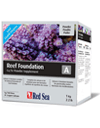
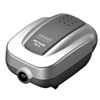


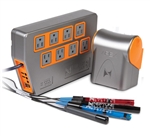

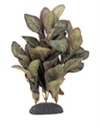

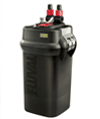

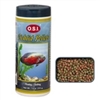





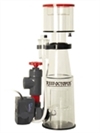





 Soft plumbing (
Soft plumbing ( Unions are amazing plumbing fittings that allow you to quickly disassemble and reassemble pipe. Here are some good places to use unions:
Unions are amazing plumbing fittings that allow you to quickly disassemble and reassemble pipe. Here are some good places to use unions:
 Bulkheads allow you to run a pipe through a flat surface. Bulkheads are most commonly used to run plumbing through holes drilled in an aquarium or sump. Bulkheads are described by the size of the pipe that will fit into them. In order to create a seal the bulkhead hole needs to be larger than the pipe that fits into the bulkhead. For example, a
Bulkheads allow you to run a pipe through a flat surface. Bulkheads are most commonly used to run plumbing through holes drilled in an aquarium or sump. Bulkheads are described by the size of the pipe that will fit into them. In order to create a seal the bulkhead hole needs to be larger than the pipe that fits into the bulkhead. For example, a  Ball valves allow you to turn the water flow on and off for a particular plumbing line. Ball valves can also be used to adjust the flow through certain equipment such as media reactors and UV sterilizers.
Ball valves allow you to turn the water flow on and off for a particular plumbing line. Ball valves can also be used to adjust the flow through certain equipment such as media reactors and UV sterilizers.
 Loc Line is a special type of hose that uses interlocking links. Loc Line is very useful for creating return plumbing and aiming flow in the aquarium. Loc Line is expensive and in most cases you will only want to use it for the return fittings in the tank.
Loc Line is a special type of hose that uses interlocking links. Loc Line is very useful for creating return plumbing and aiming flow in the aquarium. Loc Line is expensive and in most cases you will only want to use it for the return fittings in the tank.
 Teflon tape is extremely important when using threaded fittings. Teflon tape should be wrapped around male threads before the fitting is threaded into the corresponding female fitting.
Teflon tape is extremely important when using threaded fittings. Teflon tape should be wrapped around male threads before the fitting is threaded into the corresponding female fitting.
 Hose clamps come in two styles and should be used on every flexible hose connection. Stainless steel hose clamps should be used whenever the connection is out of the water (as they will rust if in water), and plastic snapper clamps should be used whenever the connection is submerged. Not all stainless steel clamps are made with stainless steel locking teeth. These cheaper hose clamps will fail shortly in a saltwater environment. Our metal hose clamps are all stainless steel and made to last.
Hose clamps come in two styles and should be used on every flexible hose connection. Stainless steel hose clamps should be used whenever the connection is out of the water (as they will rust if in water), and plastic snapper clamps should be used whenever the connection is submerged. Not all stainless steel clamps are made with stainless steel locking teeth. These cheaper hose clamps will fail shortly in a saltwater environment. Our metal hose clamps are all stainless steel and made to last.
 Drains located in an overflow box can be loud. There are many different ways to quiet your drains, but we will focus on the simplest way. If your drains are loud there are two primary kinds of noise you will hear. The first is a constant water draining noise that comes from water falling into your sump. The second is a periodic loud sucking sound. That comes from your drain sucking air after it completes a siphon.
Drains located in an overflow box can be loud. There are many different ways to quiet your drains, but we will focus on the simplest way. If your drains are loud there are two primary kinds of noise you will hear. The first is a constant water draining noise that comes from water falling into your sump. The second is a periodic loud sucking sound. That comes from your drain sucking air after it completes a siphon.